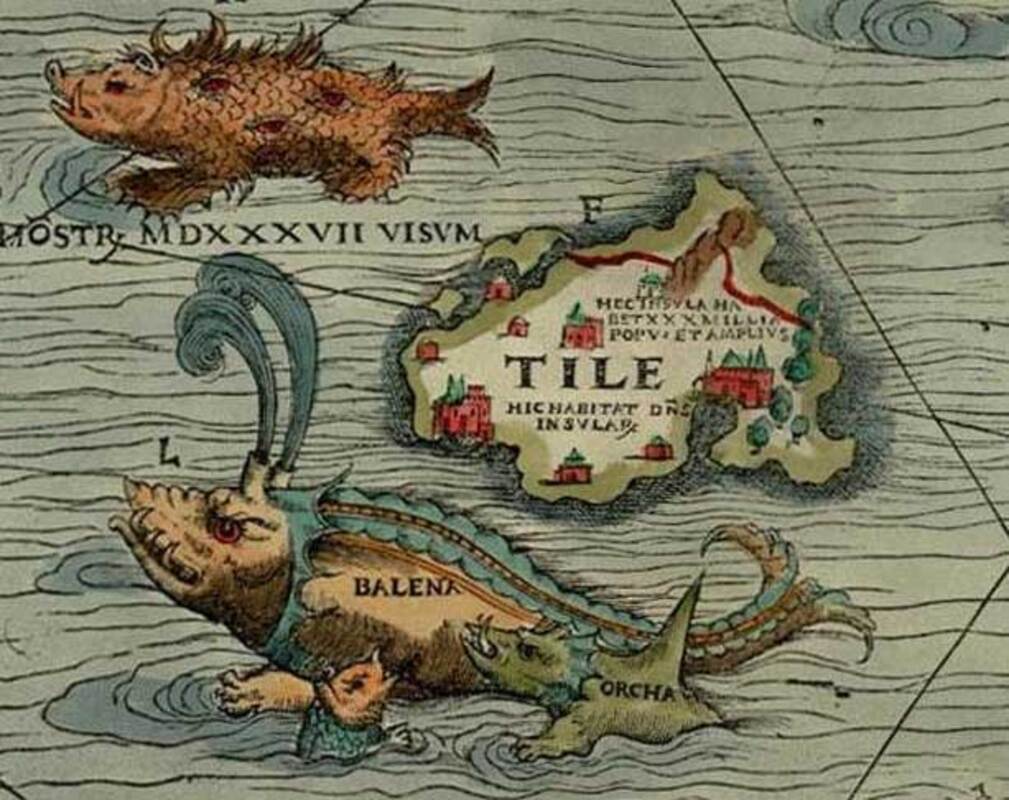
Most mythological places in ancient Greek records are to be found somewhere around the Mediterranean. However, one location from Greek mythology is quite different. This is the island of Thule.
According to ancient Greek records, the legendary island of Thule was somewhere roughly near Britain and was apparently the northernmost part of the inhabited world. What do we really know about this mysterious island?
Pytheas of Massalia
Thule first appears in the historical record in the writings of Pytheas of Massalia. The city from which he came, Massalia, was an ancient Greek colony in southern Gaul, where Marseille in France is today. Pytheas was an explorer. From his home in southern Gaul, he explored the regions around Britain, completely circumnavigating it.
However, Pytheas did not stop at Britain. He wanted to keep on exploring even further, so he continued on north. Unfortunately, we do not have his original writings or any direct copies of them. We have to rely on references to his account in the writings of later historians and geographers.
From these later records, we learn that Pytheas eventually got to a part of the sea in which it was impossible to travel any further north. There, he disembarked on an island. The name of this island was Thule.
What was Thule like?
The earliest references to the island of Thule do not provide any information regarding its size. However, it must have been relatively small since there is no reference to Pytheas traveling around the island as he had done with Britain. It seems to have been immediately evident that it was an island rather than part of a northern continent.
Regarding the people, we learn some interesting information from Strabo. Referring to Pytheas’ account of Thule, he tells us the following:
“The people live on millet and other herbs, and on fruits and roots; and where there are grain and honey, the people get their beverage, also, from them.”
Strabo follows this statement by referring to the “lack of sunshine” and stating that the people there “have no pure sunshine.” This ties in with the statement from Germinus of Rhodes, who claimed that the name “Thule” comes from the concept of the sun resting.
However, during the peak of summer, ancient writers claimed there was almost constant sunlight. Pliny the Elder, for example, stated there were no nights at all during the summer months. The Roman writer Avienus from the fourth century claimed that the nights lasted just two hours during that part of the year.
Where was the island of Thule?
The mystery of where Thule really was has intrigued researchers for many centuries. One of the most traditional identifications is Iceland. After all, this is a prominent island far to the north of Britain. At least one ancient writer, Orosius, said that Thule was not only north but also west of Britain and Ireland. This strongly supports Iceland.
On the other hand, a relatively recent proposal is that Thule was identical with Smøla, an island off the coast of Norway. The argument for this is based on the fact that Ptolemy’s map shows Scotland, the northern part of Britain, is bent on its side so that it is pointing east instead of north.
Supposedly, the error that produced this may mean that Thule was actually an island to the east of Scotland and that ancient geographers misinterpreted it as being to the north. The Norwegian island of Smøla is northeast of Scotland. However, this is not possible, because Pytheas’ account makes it clear he could not travel any further north on account of the condition of the sea. In contrast, it would be easy to continue following the coast of Norway to the north past Smøla.
The island of Thule directly north of Britain
In reality, using cartographical errors based on Ptolemy’s map from the first century is not convincing when discussing the account of Pytheas, who wrote in the fourth century BC. From a number of ancient writers, we can see that Pytheas was very clear about the location of the island of Thule.
Pytheas clearly described Thule as being an island which was six days’ sail north of Britain. Both Iceland and Smøla are about 500 from the northern tip of Britain. This is much further than Pytheas’ six days’ sail indicates. It also flies in the face of Strabo in speaking of Pytheas’ account, calling Thule the “most northerly of the Britannic Islands.”
It is clear that Thule cannot have been all that far away from Britain. When traveling directly north of Britain, we come to the Faroe Islands, which are only about 230 miles away.
What about Pytheas’ description of the people there? According to modern archaeological research, the Faroe islands were uninhabited in ancient times. Although this is admittedly an inconsistency, the same issue applies to Iceland, the only other realistic candidate. Perhaps further research will reveal evidence of earlier habitation.
See all the latest news from Greece and the world at Greekreporter.com. Contact our newsroom to report an update or send your story, photos and videos. Follow GR on Google News and subscribe here to our daily email!



